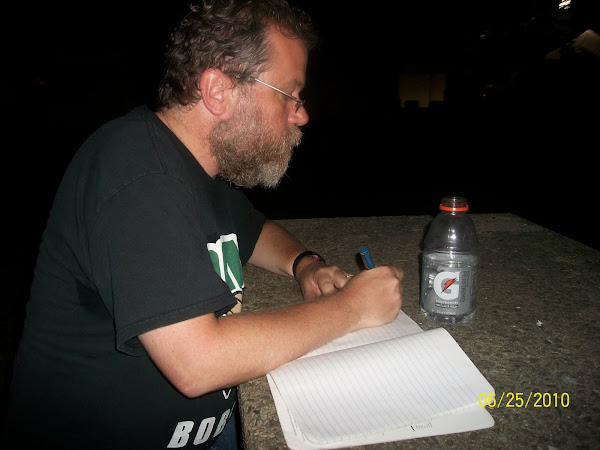There were some signs my writing block may be ending. During my 3 p.m. break, I hurriedly jotted several short story and poem ideas in my breast-pocket notebook, worried I'd forget them if I didn't put them on paper right away. Such bursts of inspiration have led me to write, sometimes they're of very short duration.
I've always described my writing style, whether with fiction or poetry, as Conrad's Castleish in approach and execution. Not many people get the allusion.
Above is the cover of the book. I'd best not scan and paste any more of it, 'cause I don't want to run afoul of copyright issues and laws.
This remains my favorite children's story, and it was ever since before kindergarten, when I got the book for my birthday. Conrad is a kid who tosses a big stone in the air. It remains hovering in mid-air (I spent many futile afternoons trying to copy this trick, in vain), so he gets a ladder, and begins building a castle, presumably pulling other stones out of hammerspace. As he works, his friends try to distract him and lure him away, the best temptations being, "Hurry, we're going to watch Harry eat some mud!" and "Do you want to see a dead mouse?" The castle is finished, hovering in mid-air in all its glory, flags flying and entrances barricaded. A bird says, "Hey, that's impossible! You can't do that!", whereupon the castle collapses. Conrad stands on the rubble, brandishing his fist in a "As God as my witness, I'll never be hungry again!" gesture, and says, "I can, too!" He builds another castle, ignoring similar distractions and lures from his friends, and has a much better castle to show for it in the end.
How does this relate to writing? I've taken several writing classes, and teachers have wanted outlines and plot descriptions. They encourage linear writing, starting at Chapter I and going on until THE END. Even Jack Kerouac, typing On the Road on a 40-foot roll of Teletype paper, managed to start at the beginning of the narrative and go on until the end, fueled by Benzedrine and gallons of black coffee.
Usually, an idea, a phrase, or even a single line will pop into my head, and if I'm fortunate enough to get out my notebook and ballpoint and write it down, I'll look at it and then try to think of something to put around it. "That single line is great," I'd tell myself, "now get 20-odd more to put around it, and you'll have a poem." Likewise, a vignette will pop into my head, often (but not always) based on a past experience or an anecdote someone has told me. The vignette isn't substantial enough to be free-standing as a short story, so it hovers in the literary netherworld until I find a plot and supporting characters to put around it.
That's the Conrad's Castle analogy. Our young hero doesn't build his castle from the ground up (it never touches the ground, in fact), but he throws a stone into the middle of the air and works from there. I've often wondered if Shecter was honoring that great Unitarian sage, Ralph Waldo Emerson, who said: "If you have built castles in the air, your work need not be lost; that is where they should be. Now put the foundations under them."
This type of plotting and writing is problematic when you (like I) still prefer pen and ink, or a manual typewriter, to word processing. Using this method, when I composed exclusively on a typewriter, meant many crossed-out passages, paragraphs written in margins, pages numbered "72 1/2", etc. (When I was a typesetter, copy like that would drive me absolutely bonkers.) When I do actually sit down and get to work, the laptop is a blessing, not just because it's much quieter (I am not gentle with typewriters; I have been told I treat them the way Pete Townshend treats stage guitars), but because I can move things around and insert entirely new ideas and scenarios and have the finished product still look decent.
So, I doubt any writing teacher will endorse this method, at least not in class. But it seems to be the only way I ever get anything done.
There may yet be hope, since I was sitting at break at 3 p.m. and some ideas came to mind.
We'll see.
Wednesday, April 7, 2010
My Writing and Plotting Style: The CONRAD'S CASTLE Method
Labels:
conrad's castle,
dry spell,
jack kerouac,
notebook,
on the road,
writing
Subscribe to:
Post Comments (Atom)



As I was getting near the end of my first novel, I was taken with a scene that was about two places ahead of where I was, so I stopped where I was, and wrote the other one. Only had slight difficulties getting from where I was to what I had written.
ReplyDeleteOne of Murphy's Laws of Combat is "If it's stupid, but it works, it's not stupid." Applies here too.
I think that i do a little of both. I start with the beginning, put my characters in a scenario and let them react. Usually, I have no bloody idea what they will do next. Sometimes they even surprise me with what they come up with and do. I really scare myself with what is inside my head when I write. However, once the storyline gets rolling, I have been known to jump ahead, insert a fantastic scene and then edit it to death to make it fit. It is good to know that someone else does the same thing.
ReplyDelete